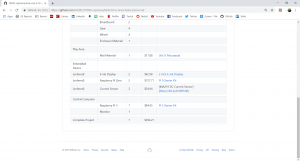This week for our project, since we had just finished our project presentation, we moved our focus onto getting all our parts for the project. We all worked together to start finding cost-effective options to purchase everything, so we could start testing our devices. I was tasked to find the parts for the RFID card reader and the physical materials we’ll be using to make the playing area itself. After looking up some examples of RFID playing cards and seeing that a pre-made deck would be too expensive for our project, I moved to our second plan of placing RFID stickers on the backs of a regular deck of cards. I coordinated with Eric to make sure that the components we found would be compatible with the Raspberry Pis we wanted to use. After looking through many options on Adafruit, Amazon and other websites, Eric found some RFID stickers on eBay that were a much cheaper option. I found very cheap cards on Amazon, along with a set of poker chips, as well as a mousepad that we wanted to use as the playing mat and install all our components into.
As we were looking for our parts, I took charge in making our bill of materials, so that we could get a head start and help keep track of all the prices and quantities that we needed for everything. I broke it down by requirement, and listed the materials, quantity and cost of everything. As everyone found their parts, they would send it to me for documentation and I was able to calculate our total cost to make sure we were within our budget.
Once we saw that we would be within our budget, I started submitting parts to order to Quinn so we could start putting things together next week. I submitted orders for the Raspberry Pi Zeros, the Current sensors, the E-ink displays, the RFID Tags and reader/writer, the playing cards and poker chips.
I am on schedule with our project. If our parts start to come in next week, we’ll be in a good position to start creating our custom chips, displays and RFID cards and test them. I’ll be creating the numbering scheme for the cards next week once I get the tags and can see what I can store in them. I also want to be able to hook up our RFID reader/writer to the Raspberry Pi with Eric so I can put the tags on our cards and start assigning them their bit values according to their rank and suit. I will also start working a little more in depth with Mark for the design of our shuffler and dealer. I would want to make a CAD model of the whole device so that we can order the motors for it and start prototyping.





















